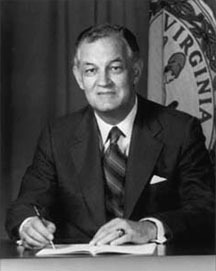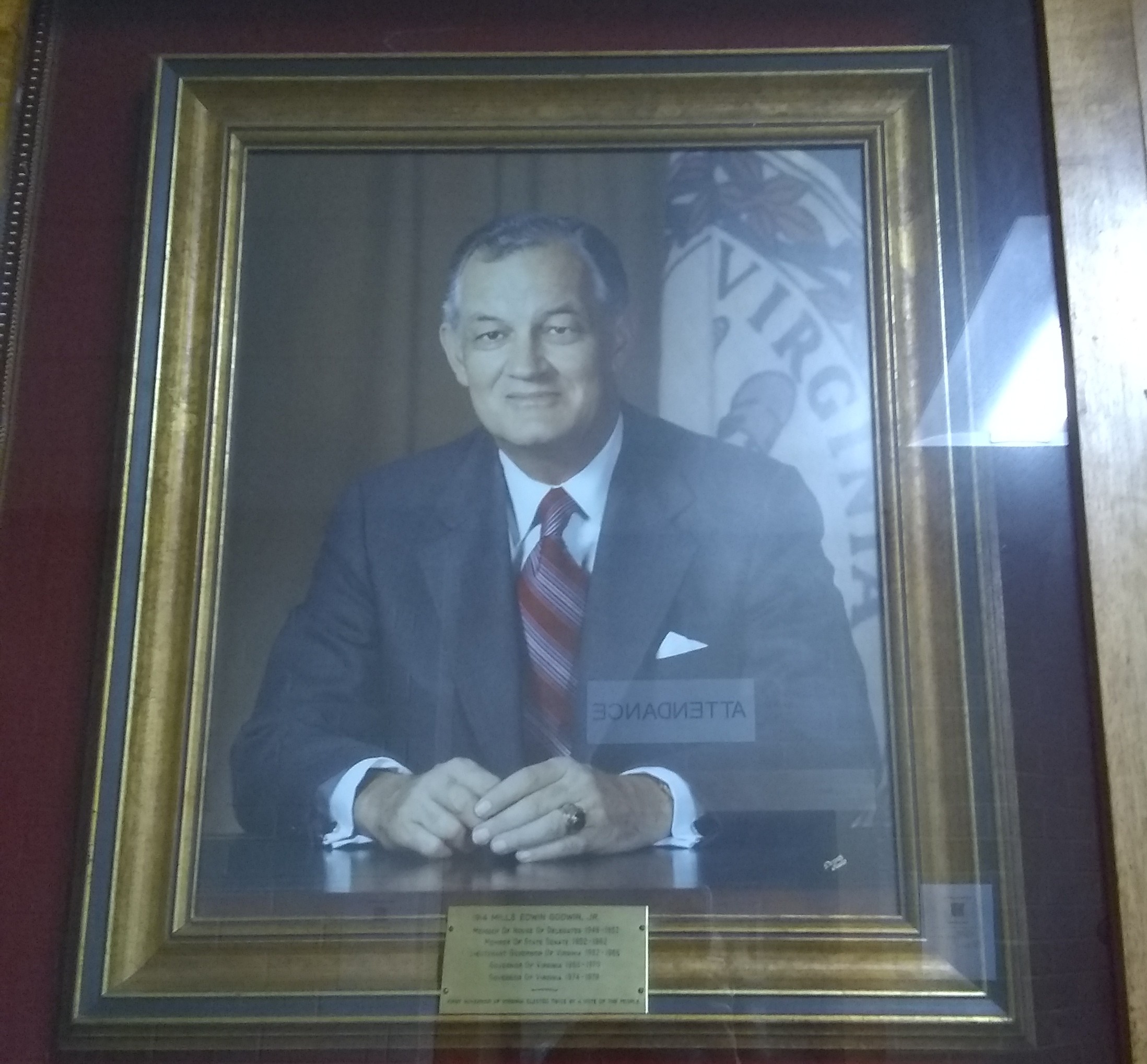All schools have significance to their names, but many people don’t think about who their schools are named after.
Our school was built in honor of Governor Mills Edward Godwin Jr. He was Virginia’s 60th and 62nd governor, being the only governor that was elected twice by the people.
Godwin represented both political parties at the time, highlighting how much American politics have changed during the twentieth century, and was a role model for many.
Godwin was born in Nansemond County, now Suffolk, on Nov. 19, 1914. He attended Chuckatuck High School and graduated from William and Mary through their undergraduate program and University of Virginia Law School.
During WWII, Godwin served for the FBI in Washington D.C.
Bart Barnes, a Richmond-Times Dispatch writer, said, “…in 1975 [Godwin] launched his political career by winning a seat in the Virginia House of Delegates.”
Godwin had defeated the dominant conservative Democratic political organization led by U.S. Senator Harry F. Byrd Sr., yet he still believed in many core ideas the organization had.
In 1952, Godwin won a special election to fill an empty seat in the state Senate and became a major role player in the Massive Resistance: A policy designed to desegregate public schools in Virginia.
Godwin did not apologize for his stance during the Massive Resistance, yet he did acknowledge that “we [had] waited too long to do some of the things we should have done in earlier years to assure full equality of opportunity in education for our Negro children.”
Godwin was also elected as lieutenant governor in 1961 and endorsed Lyndon B. Johnson for the new American President.
This helped him win the governor’s office in 1965.

Godwin’s first term was characterized by taxes for state revenue, mental health and educational improvements, Virginia’s environment, and public safety.
An online Virginia encyclopedia said, “Godwin’s term state appropriations for public schools increased by more than 100 percent.”
Godwin heavily opposed federal budget cuts for higher education, and a high school named for him was proposed in the mid-1970s
The Henrico County School Board voted on creating the high school in the late 1970s. The build started in the late 1970s and finished in early 1980.
A placard in the school stated that the companies that lead the construction of the school were: “Carneal & Johnstron, Architects-Engineers, Kjellstrom and Lee, Inc, General Contractor.”
The school officially opened in September 1980.
Originally designed as a “modernized school”, teachers, supervisors, and students had several upgrades from other schools: storage space for each teacher independant from the classrooms, two different lockers for students who desired more space, and bigger blackboards in the Math classrooms, which had graphs marked on them.
A report from a 1980 Richmond Time Dispatch article said, “Opening day, about 500 freshmen and sophomores will be enrolled…The first senior will graduate in 1983.”
Godwin was large enough to add classrooms if needed, so it could increase the school’s capacity depending on how many students enrolled each year.
Governor Godwin provided a lot for education during his first term, which is why our school was named after him.
A Mills E. Godwin Middle School, located in Woodbridge, VA. and the Mills E. Godwin Jr. Courts Building, located in Suffolk,VA, have been named after him as well.
Even after his first term, Godwin continued to be involved in politics.
In fact, his political ideas began to change at the end of his term in office.
“After leaving the Executive Mansion on January 17, 1970, Godwin became increasingly uncomfortable with the leftward drift of the Democratic Party on both the state and national levels,” the encyclopedia stated.
Godwin became independent, yet people turned toward him to run for governor again.
Godwin wanted to run independent but he agreed to run as a Republican.
Godwin won and came back to the Governor’s mansion, this time as a Republican candidate.
His second year was a lot harder to manage with a national economic recession and the Arab Oil Embargo of 1973.
His second term was characterized by a myriad of things: fixing and upgrading Virginia’s prison system, creating the Department of Corrections, bringing attention to energy conservation, improving education, tightening the budget, and helping with the James River kepone pollution.
“He left office for good in 1978, but at least for a decade after that continued to be an influential behind-the-scenes figure in state politics,” Barnes said.
Godwin died of pneumonia in January of 1999, a few days after being checked into a Newport News hospital.
Even though Godwin passed away 20 years after he left office, the senior class of ‘95 had the privilege of meeting the governor himself.
The governor gave them a tour, explaining personal and public photos and memorabilia, and encouraged the seniors to be involved in politics and to be whatever they wanted to be, and they had to do it well.
“For more than a generation, [Godwin] was a vital figure in the political transition of Virginia from domination by a tightly knit organization based on rural courthouse alliances into a modern era in which media savvy, issue identification and urban and suburban voter appeal determined elections.” said Barnes.


Be the first to comment on "Who the heck was Mills E. Godwin anyway?"